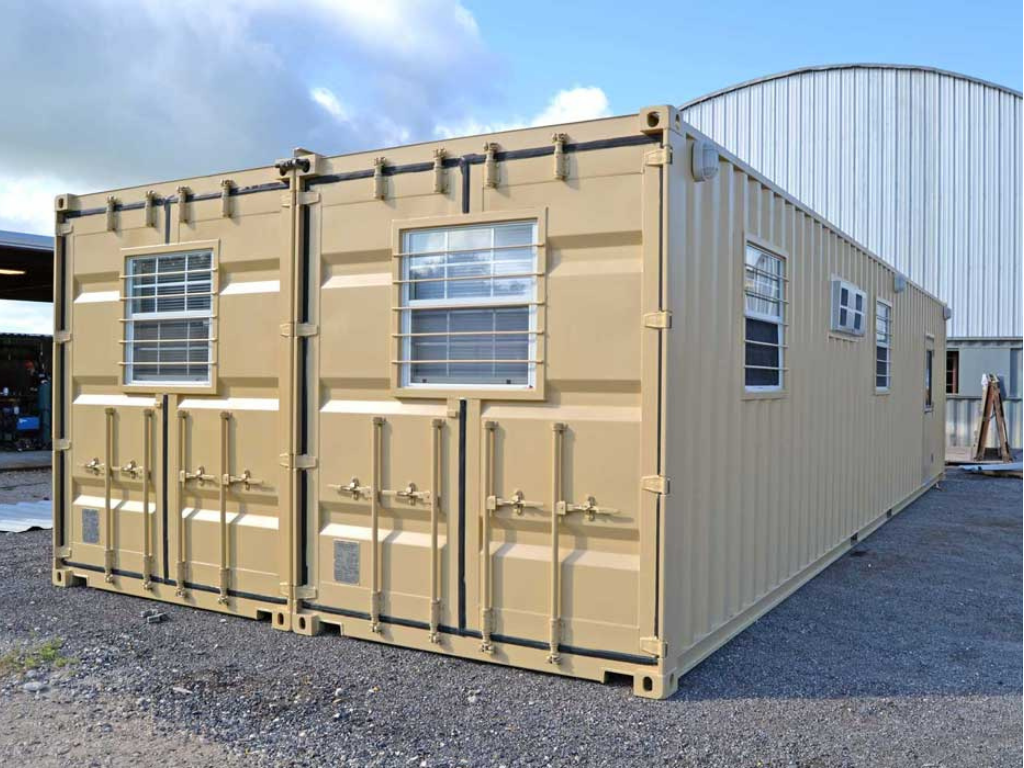Shipping containers have become more than just vessels for transporting goods across the globe. In recent years, these sturdy steel boxes have been repurposed in innovative ways, making their mark in urban living. From eco-friendly homes to versatile public spaces, shipping containers offer a sustainable and affordable alternative to traditional construction. Here are ten creative uses for shipping containers that are transforming urban environments.
1. Container Homes: Affordable and Sustainable Housing
One of the most popular uses of shipping containers in urban living is the creation of container homes. These compact, durable structures can be stacked or arranged in various configurations to form affordable housing units. In cities where real estate prices are skyrocketing, container homes offer a cost-effective solution for young professionals, families, and eco-conscious individuals looking for sustainable living spaces. The modular design allows for expansion and customization, making them ideal for urban dwellers who need flexibility.
2. Pop-Up Shops: Versatile Retail Spaces
Shipping containers are perfect for creating pop-up shops in busy urban areas. Their portability and size make them easy to set up and relocate, allowing businesses to experiment with different locations and markets. From food stalls to clothing boutiques, pop-up shops made from containers can provide a trendy, industrial-chic aesthetic that appeals to urban consumers. They’re also more affordable than traditional storefronts, making them accessible for small business owners and entrepreneurs.
3. Urban Gardens: Maximizing Green Space
In cities where green space is limited, shipping containers can be transformed into urban gardens. Whether used as planters or as fully functioning greenhouses, these containers offer an innovative solution to urban agriculture. Rooftop gardens and community spaces can utilize containers to grow herbs, vegetables, and even small trees. This not only promotes sustainability but also provides residents with access to fresh, locally grown produce. Container gardens are a great way to maximize space in densely populated areas while contributing to environmental health.
4. Office Pods: Flexible Workspaces
The demand for flexible, remote working options has soared in recent years, and shipping containers provide a unique solution. Container offices, or “office pods,” can be set up in urban areas to serve as individual workspaces or co-working hubs. These pods are often fully equipped with insulation, electricity, and internet access, offering all the amenities of a traditional office at a fraction of the cost. Companies can even use containers to create entire office complexes, fostering collaboration in a modern, eco-friendly setting.
5. Restaurants and Cafés: Trendy Dining Spaces
Shipping containers are making waves in the food and beverage industry, with many urban areas seeing an influx of container restaurants and cafés. These compact dining spaces are not only visually striking but also offer a unique dining experience. Container restaurants are often designed with large windows and rooftop terraces, allowing customers to enjoy outdoor seating in an urban setting. Their modular nature also allows for easy expansion, making them ideal for pop-up events, food festivals, or seasonal markets.
6. Mobile Classrooms: Expanding Educational Opportunities
In densely populated urban areas, space for schools and educational institutions is often limited. Shipping containers can be repurposed into mobile classrooms that can be transported to different locations, providing flexible learning spaces. These classrooms are equipped with everything a traditional classroom offers, including desks, whiteboards, and even air conditioning. Container classrooms have been used for everything from language classes to coding boot camps, making education more accessible to urban residents.
7. Art Galleries and Studios: Showcasing Creativity
For artists looking to showcase their work, shipping containers provide an affordable and flexible alternative to traditional gallery spaces. Urban areas have seen a rise in container art galleries and studios, which offer a unique and modern space to display artwork. Artists can customize the interior of the container to fit their vision, while the exterior can be used for murals or other forms of creative expression. These galleries often pop up in cultural districts or art fairs, contributing to the local art scene and providing exposure to emerging artists.
8. Public Restrooms: Practical and Portable
Public restrooms are a necessity in any urban area, but finding space to build them can be challenging. Shipping containers offer a practical solution by providing portable, durable restrooms that can be set up in parks, event spaces, or busy city centers. These restrooms are often equipped with modern amenities like plumbing, lighting, and ventilation, ensuring that they are both functional and comfortable. Additionally, container restrooms can be easily relocated, making them ideal for festivals, concerts, or other temporary events.
9. Temporary Housing for Disaster Relief
Shipping containers have been used globally to provide temporary housing solutions during natural disasters or humanitarian crises. In urban areas, containers can be quickly converted into shelters for people displaced by floods, fires, or earthquakes. These shelters are weatherproof, durable, and easy to transport, making them an ideal option for emergency housing. Cities prone to disasters can keep container units on standby, ensuring a rapid response when housing is urgently needed.
10. Retail Complexes: Modular Shopping Centers
In some urban areas, entire shopping complexes have been constructed using shipping containers. These modular retail spaces offer an alternative to traditional shopping malls, with each container serving as a storefront for a different business. Container shopping centers can be arranged in various configurations, with outdoor courtyards, seating areas, and even rooftop gardens. They create a unique, open-air shopping experience that appeals to modern consumers looking for sustainability and creativity in their urban environment.




